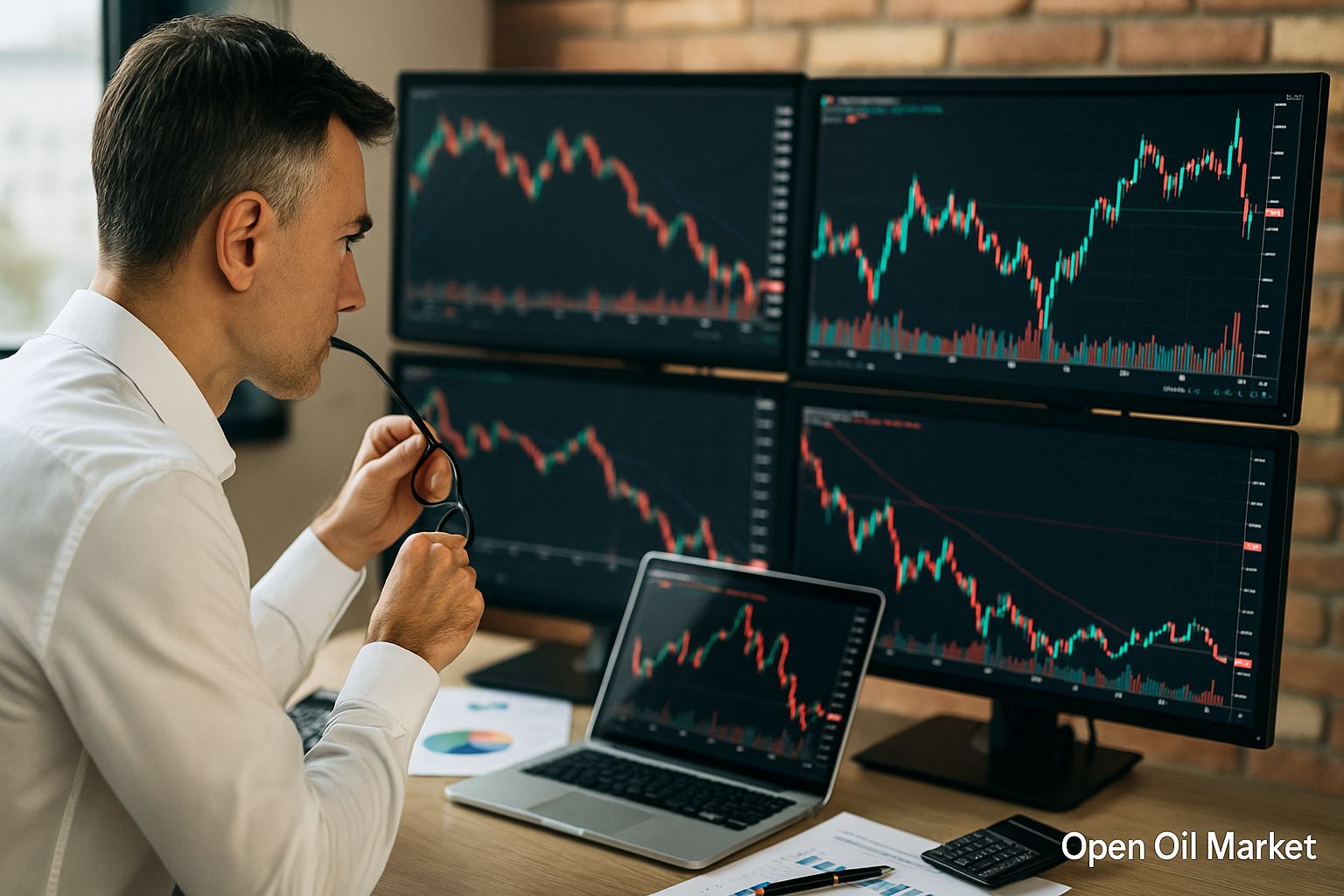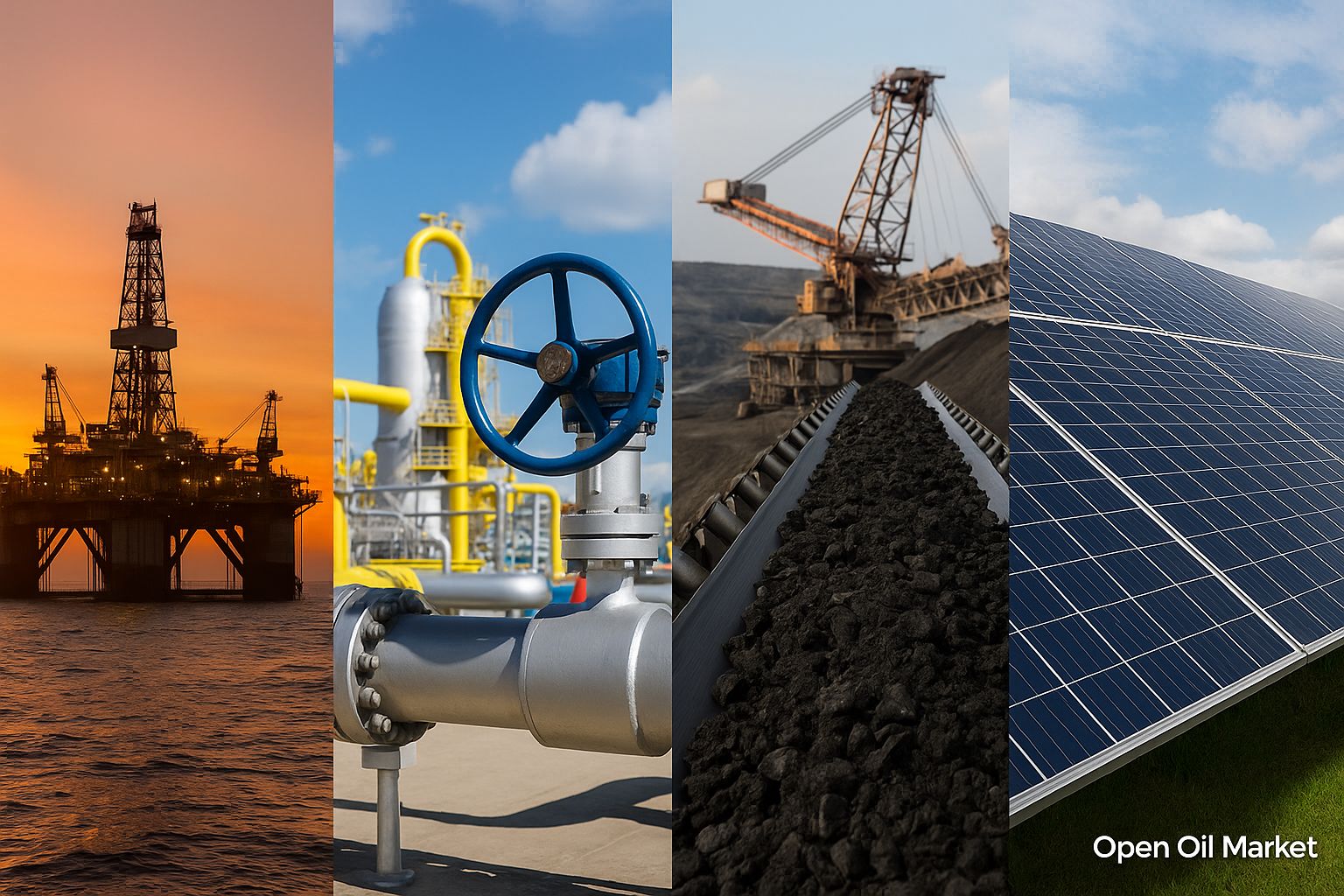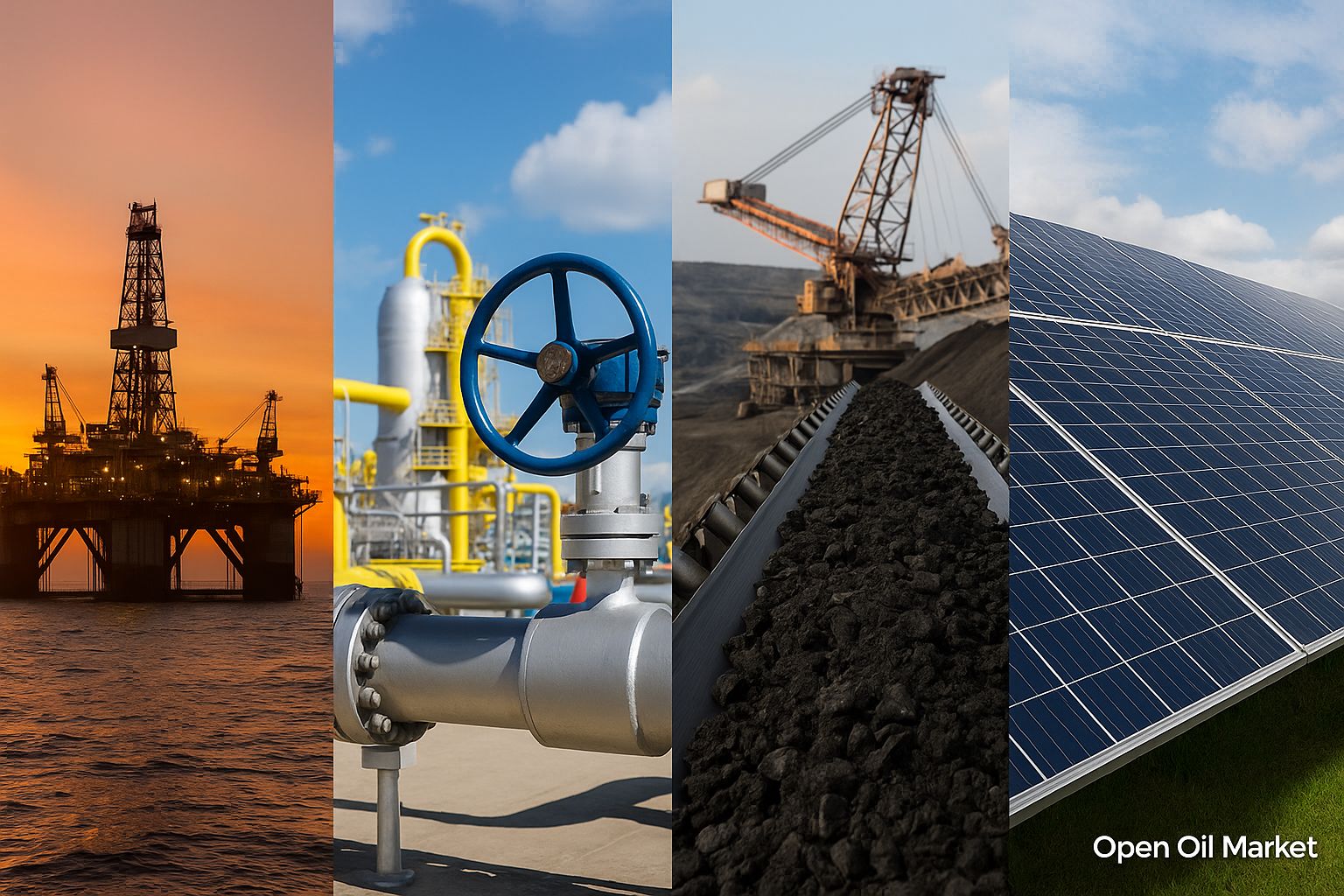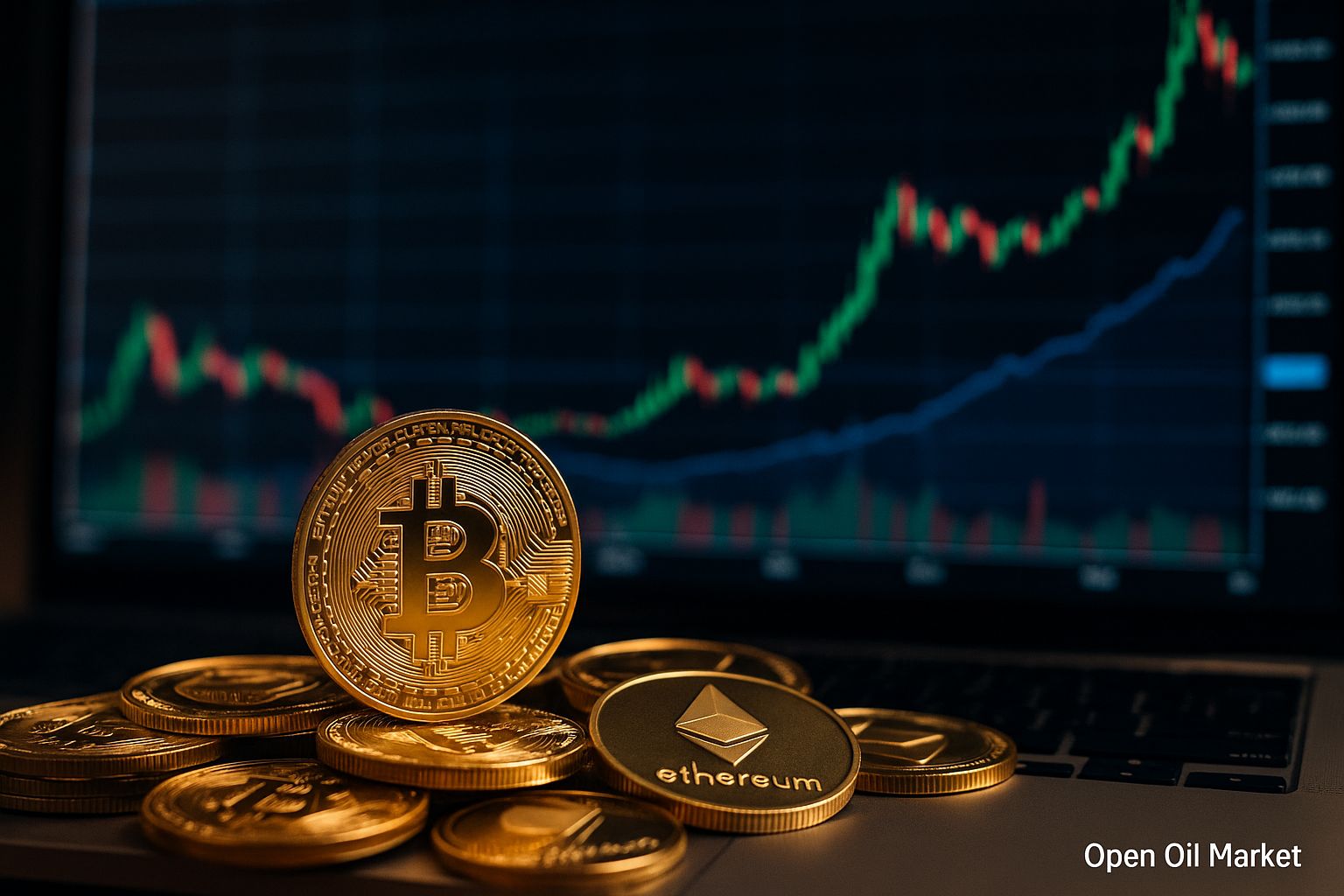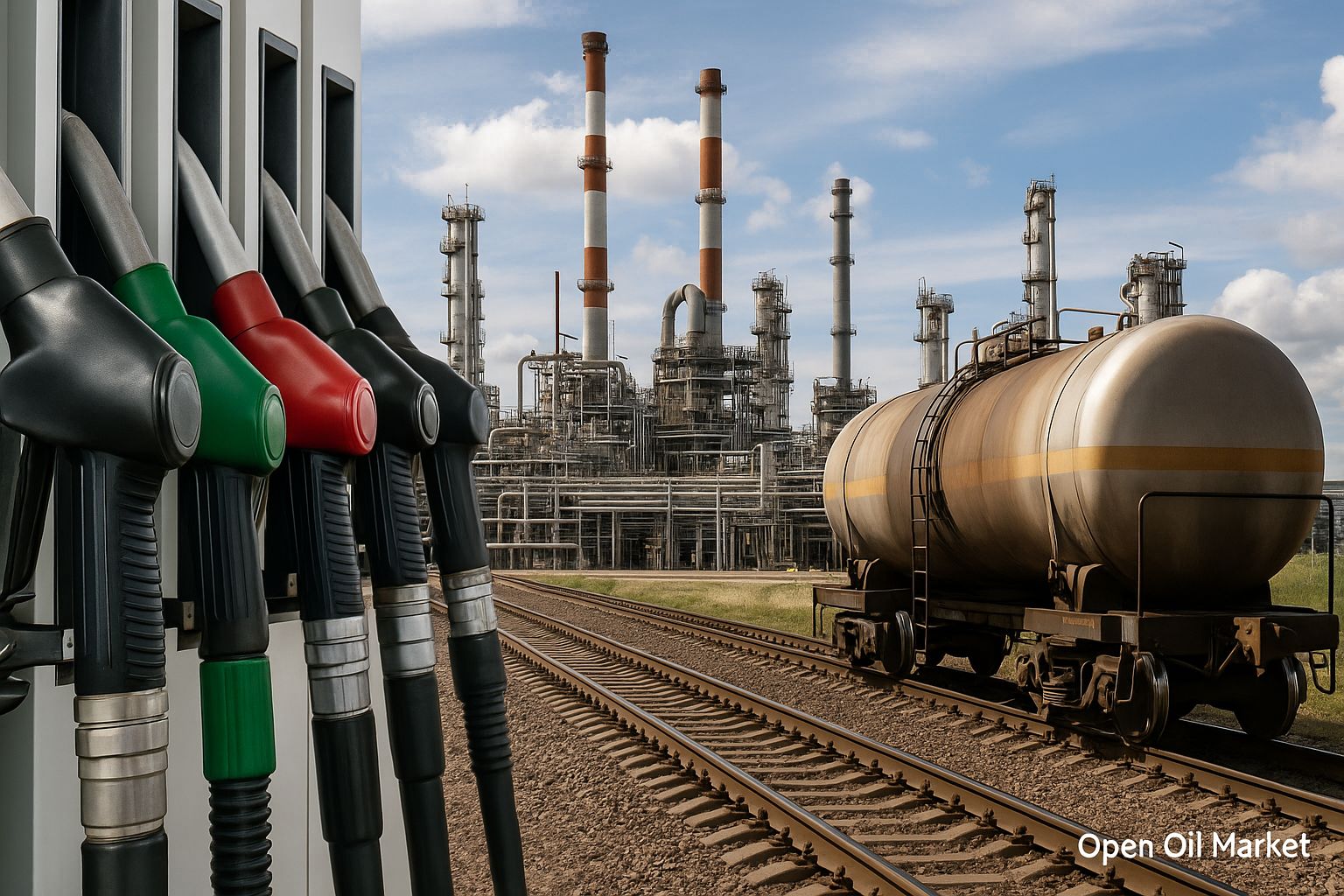
Current News in the Fuel and Energy Complex for Sunday, 21 September 2025: New EU Sanctions Package, Oil Market Balance, Gas Reserves in Europe, Renewable Energy Records, Stable Demand for Coal, and Measures to Stabilise Fuel Prices in Russia.
Recent developments in the fuel and energy complex (FEC) as of 21 September 2025 are unfolding against a backdrop of geopolitical tension and relative stability in commodity markets. Following summer attempts at dialogue between Russia and the USA, no significant breakthroughs have occurred, and sanctions risks remain high. The European Union this week presented its 19th sanctions package aimed at Russia's energy and financial sectors, underscoring the enduring rigidity of the sanctions standoff. Meanwhile, some communication channels between Moscow and the West remain open, even though there is no sign of serious progress.
A fragile balance is being maintained in the global oil market: oversupply and sluggish demand growth are keeping Brent benchmark prices near the upper $60 per barrel, reflecting the market's resilience in the absence of new shocks. The European gas market demonstrates confident readiness for winter, with underground gas storage facilities (UGS) in the EU over 90% full, providing a solid buffer heading into the heating season and keeping exchange prices at a moderate level. Concurrently, the global energy transition is picking up pace, with many countries reporting new records for electricity generation from renewable sources (RES), although the reliability of energy systems still requires reliance on traditional resources. In Russia, following a recent spike in fuel prices, authorities continue to implement a comprehensive set of emergency measures aimed at stabilising the domestic oil products market. Below is a detailed overview of key news and trends in the oil, gas, energy, and commodity sectors as of today.
Oil Market: Stable Prices Amid Production Increases and Cautious Demand
Global oil prices remain relatively stable and moderate as September draws to a close. North Sea Brent trades at around $67–69 per barrel, while American WTI ranges between $63–65. Current prices are approximately 10% lower than last year's levels, indicating a gradual normalisation of the market following the peak energy crisis of 2022–2023. Several factors are impacting price dynamics:
- OPEC+ Production Increases. The oil alliance continues to methodically increase market supply. At the beginning of the month, on 7 September, participating countries agreed to another collective production quota increase of approximately +140,000 barrels per day starting in October (following a prior increase of +548,000 b/d the month before). Despite relatively low prices, OPEC+ is keen on regaining lost market shares, resulting in rising global oil and petroleum product stocks.
- Cautious Demand Growth. Global oil consumption is rising much more slowly than in previous years. According to the International Energy Agency (IEA), demand growth in 2025 is expected to be less than 1 million b/d (compared to over +2.5 million in 2023). OPEC also forecasts modest growth (~+1.2–1.3 million b/d). The reasons include a slowdown in the global economy (including reduced GDP growth rates in China) and the impact of high prices from previous years, which have spurred energy conservation.
- Geopolitical Risks. Although there are no new major conflicts, the sanctions pressure and uncertainty surrounding Russian oil exports remain in traders' sights. However, partial redirection of flows and the establishment of a "shadow" fleet of tankers have mitigated the immediate impact of sanctions on physical supply. Consequently, the price range remains narrow – the market lacks momentum for either rallies or crashes, maintaining equilibrium.
The combined impact of these factors results in a slight oversupply in the oil market, keeping prices from rising sharply while preventing significant declines. Investors are closely monitoring OPEC+’s further steps and the global economy: any signals of increased demand or, conversely, new supply restrictions could shift the tenuous price balance.
Gas Market: High Storage Levels in Europe Ensure Price Stability
In the gas market, the main focus is on Europe's readiness for the winter season. EU countries have met their gas storage targets ahead of schedule: the total gas storage level exceeds 90% of capacity, significantly above the minimum requirements for the start of the heating season. This factor, coupled with stable liquefied natural gas (LNG) inflows, has kept spot gas prices in Europe relatively low and controlled. For comparison, the current futures price for gas at the Dutch TTF hub is approximately half of what it was last autumn, despite a reduction in pipeline supplies from Russia.
Experts note that sharp price spikes in gas are not expected in the coming months: even with increased winter demand, accumulated reserves should be sufficient to cover peak consumption. Additional support for the gas market comes from mild autumn weather in Europe and a continued influx of LNG tankers from the USA, Qatar, and other countries. Thus, the European gas sector enters winter 2025/26 with confidence in the stability of supply and prices.
International Politics: Sanctions Standoff Without Easing
The geopolitical situation surrounding energy markets remains tense. Western countries continue to ramp up economic pressure on Russia: the 19th EU sanctions package includes additional restrictions on energy exports, financial transactions, and cooperation with third countries. Specifically, the EU plans to completely ban imports of Russian LNG by 2027, expands lists of shadow fleet vessels, and tightens financial restrictions (up to a complete ban on transactions with certain Russian banks and crypto platforms). Moreover, remaining exceptions for specific Russian oil and gas companies are lifted, highlighting Brussels' intention to close any loopholes for sanction circumvention.
The new sanctions measures still await unanimous approval from all EU member states, and discussions may take several weeks. Nevertheless, it is clear that neither side is prepared to soften its stance: the sanctions standoff remains at a high level. Meanwhile, targeted contacts continue – for example, in consultations on specific issues (grain deals, exchanges, etc.), but this has little impact on the strategic picture. For investors, this means ongoing heightened geopolitical risks, although the market has largely adapted to existing restrictions.
Asia: The Key Role of India and China in Energy Markets
- India: Faced with Western sanctions pressure, New Delhi has made it clear that a sharp reduction in imports of Russian oil and gas is unacceptable due to their critical role in the energy balance. Indian importers continue to actively purchase Russian oil and petroleum products, taking advantage of favourable price conditions. According to traders, Russian Urals oil is sold to India at about a $5 discount to Brent prices, in order to maintain competitiveness in the Indian market. Simultaneously, the Indian government is taking steps to reduce long-term dependency on imports. Recently, a national programme for exploration of deep-water oil and gas fields was announced, under which state-owned ONGC has commenced drilling ultra-deep wells in the Andaman Sea. Initial results are perceived as encouraging – this initiative aims to unveil new hydrocarbon reserves and bring India closer to the goal of energy independence in the future.
- China: Asia’s largest economy is also ramping up energy imports while simultaneously increasing its domestic production. Beijing has not joined Western sanctions and is importing large volumes of Russian oil and gas at attractive prices. By 2024, China imported about 213 million tonnes of oil and 246 billion cubic metres of natural gas – an increase of 1.8% and 6.2% year-on-year. In 2025, import growth continues, albeit at more moderate rates. Concurrently, China is stimulating its domestic oil and gas production: in the first eight months of 2025, national companies extracted over 145 million tonnes of oil and 175 billion cubic metres of gas, boosting output by about 1–2% year-on-year. This increase in domestic production somewhat reduces the need for imports but does not eliminate it: analysts note that in the coming years, China will continue to depend on imports for about 70% of its oil consumption and around 40% of its gas consumption. Thus, India and China – the two largest Asian consumers – continue to play a decisive role in the global energy resource market, combining strategies for securing supplies from abroad with the development of their domestic resource bases.
Energy Transition: New Records in Renewable Energy and Balance with Conventional Generation
The global transition to clean energy reaches a new level in 2025. Many countries are reporting record levels of electricity generation from renewable sources. In 2024, for the first time in the European Union, total output from solar and wind power plants surpassed generation from coal and gas-fired power plants. This trend continues into 2025: thanks to the commissioning of new capacities, the share of "green" electricity in the EU continues to grow, while coal usage decreases following a temporary rise during the 2022–2023 crisis. In the USA, renewable energy also hits historical records – by the beginning of 2025, over 30% of all electricity generation came from RES, and total generation from wind and solar for the first time exceeded output from coal power plants.
China, the world leader in RES installed capacity, continues to introduce new gigawatts of solar panels and wind turbines each year, consistently breaking its generation records. Globally, companies and investors are actively investing in clean energy development: according to IEA estimates, total investments in the global energy sector in 2025 will exceed $3 trillion, with more than half of those funds allocated to RES projects, grid enhancements, and energy storage systems.
However, energy systems still cannot fully do without conventional generation for stability. The growing share of solar and wind introduces new challenges for grid balancing: during hours when renewable generation dips (night, calm weather), gas and even coal power plants are called upon to cover peak demand and reserve capacity. For example, last winter in certain regions of Europe, authorities had to briefly increase output at coal-fired power plants during prolonged windless periods, despite the associated environmental costs. In response, governments are investing in large-scale energy storage systems (industrial batteries, pumped storage hydropower plants) and "smart" grids capable of flexibly managing loads. Experts anticipate that by 2026–2027, renewable sources could take the lead in global power generation volumes, definitively surpassing coal. However, in the coming years, support from conventional power plants will remain necessary as a safeguard against supply disruptions. In other words, the global energy transition is reaching new heights, but requires a delicate balance between "green" technologies and traditional resources.
Coal: High Demand in Asia Supports the Market, Prices Remain Moderate
Despite global climate goals, the world coal market in 2025 continues to operate at historically high levels. Global coal consumption remains close to record values, primarily driven by Asian countries. China continues to be the largest producer and consumer of coal globally, producing over 4 billion tonnes annually and burning substantial volumes at its power stations. During peak summer heat periods, when air conditioning demand surges, even these volumes prove insufficient, prompting Beijing to increase coal imports to prevent electricity shortages. India, which generates over 70% of its electricity from coal-fired plants, also demonstrates rising absolute coal consumption as its economy expands. Several other rapidly developing Asian countries (Indonesia, Vietnam, Bangladesh, etc.) are bringing new coal power capacities online to meet growing electricity demand.
The world’s largest coal exporters – Indonesia, Australia, Russia, South Africa, and others – have ramped up production and deliveries in recent years. Following price spikes in 2021–2022, global prices for thermal coal are now being maintained at relatively moderate levels. This, on the one hand, ensures affordable fuel for electricity generation, while on the other hand, leaves sufficient profit margins for extracting companies. Although many states declare plans to gradually move away from coal for environmental reasons, in the short term, this resource remains indispensable for reliable electricity supply for hundreds of millions of people, especially in the Asia-Pacific region. As a result, the coal sector is in a relative state of equilibrium: demand for coal remains consistently high, while prices are predictable and beneficial for all market participants.
Russian Oil Products Market: Extension of Restrictions and Readiness for Normalisation
In the Russian domestic fuel market, unprecedented measures were implemented in the second half of summer to contain rising prices for petroleum products. In August, wholesale exchange prices for gasoline and diesel reached historic highs amid a surge in demand, unscheduled shutdowns at some refineries, and high export profitability. To saturate the domestic market with fuel, the government temporarily restricted fuel exports: major vertically-integrated oil companies are prohibited from exporting gasoline and diesel until 30 September, while independent traders and small producers are barred from exporting until 31 October 2025. Refining plants are instructed to prioritise supplying domestically to ensure increased deliveries to regions where shortages were previously recorded (additional fuel shipments, in particular, were sent to Primorye and Crimea).
Apart from urgent measures, authorities are also developing long-term mechanisms to stabilise the petroleum products market. These include adjustments to the damping mechanism: plans are underway to widen the allowable range of deviation of exchange fuel prices from the basic indicator, under which producers receive compensation. In other words, the state is ready to raise the threshold for the “damping” mechanism (currently 10% for gasoline and 20% for diesel), allowing refiners to receive payments even at higher domestic prices. This step aims to reduce incentives for exports and support refinery economies by retaining more fuel in the domestic market. Regulators note that changes will likely be applied retrospectively from August, as by the end of summer, wholesale gasoline prices had exceeded the existing damping payment thresholds.
Analytical Comment:
“Although the damping threshold values for diesel have not yet been exceeded, regulators still intend to raise them. Suppliers are eager to increase revenue from exchange sales of diesel while retaining subsidy rights – this is particularly relevant as operators of several refineries currently have to spend additional funds to restore infrastructure. Consequently, given the seasonal increase in diesel demand in autumn and the transition to more expensive winter grades, prices for diesel in both the exchange and retail markets are expected to rise faster than those for gasoline,” notes Sergey Tereshkin in his commentary for Rossiskaya Gazeta.
By mid-September, the measures undertaken began to yield results: following the price peak in August, wholesale fuel prices fell by approximately 7–8%. However, during the second decade of September, price pressure intensified again – exchange prices for gasoline and diesel resumed their upward trend, remaining influenced by still high demand and supply restrictions (ongoing refinery repairs and sporadic disruptions due to drone attacks). Nonetheless, the government asserts that the situation is under control: filling stations are supplied with the required volumes of fuel, and additional deliveries from refineries continue. The Central Bank of Russia also notes that as the harvest campaign concludes and refineries return to operational status post-repair, gasoline price growth should slow. Authorities are prepared to allow a resumption of petroleum product exports only after the domestic market is fully saturated and exchange prices return to comfortable levels. Thus, the set of measures adopted aims to gradually normalise the situation. If necessary, restrictions on exports can be extended, while additional tools may be activated to keep prices for gasoline and diesel in acceptable ranges for end consumers.
Telegram Channel OPEN OIL MARKET – Daily Analysis of the FEC Market
To stay updated on current events and trends in the fuel and energy market, subscribe to our Telegram channel @open_oil_market. Daily reviews, insider industry information, and only verified facts are published there – all the most important updates for investors and FEC specialists without unnecessary informational noise.

